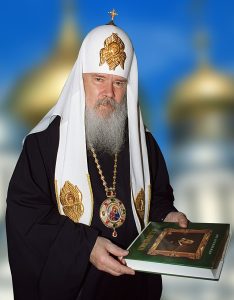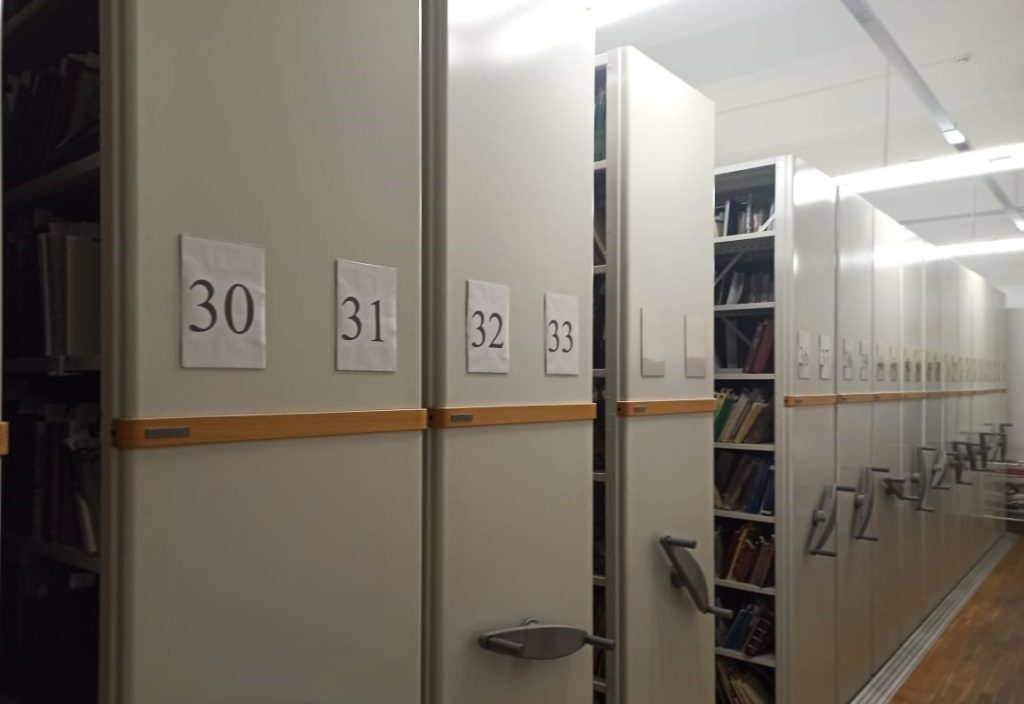The Synodal Library of the Russian Orthodox Church named after His Holiness Patriarch Alexy II

The Synodal Library is a branch of the Holy Synod of the Russian Orthodox Church and is the main repository for books, periodicals, and manuscripts that are important for the church and the cultural life of Russia. It conducts library, research, information, and bibliographic activities, as well as organizing and hosting scientific conferences, making it an important platform for the study of religious and historical aspects of Russian culture and spirituality. The library traces its origins back to the 16th century, when it began as the Patriarchal Library. Its initial collection consisted of the books of Moscow metropolitans who, after being consecrated in Constantinople, brought with them Greek and Slavic manuscripts. The patriarchs who managed the library over time added their personal collections to it, and by the time of Patriarch Filaret, father of Tsar Mikhail Fedorovich, the library contained more than 500 books in both Greek and Slavic. Among them were works sent by Patriarch Kirill of Constantinople, as well as those transferred from the Kirillo-Belozersky and Trinity monasteries. During the time of Patriarch Nikon’s reign, who, in addition to managing church affairs, was actively involved in correcting church books, the collection was enriched with numerous acquisitions from the East and other monasteries, collected during trips to Mount Athos and other expeditions. Patriarch Joachim added his own collection and manuscripts received from Patriarch Dositheus of Jerusalem to the library. After the establishment of the Synod in 1721, by decree of Peter I, the Patriarch’s Library was transferred to the control of the Holy Synod and given a new name – the Synodal Library. At that time, the library had about 1,000 books, including rare manuscripts in Greek and Latin brought from the Chudov Monastery and works by prominent Orthodox thinkers of the 17th and 18th centuries, such as Epiphanius Slavinetsky, Simeon Polotsky, and the Likhud brothers. In 1722, the imperial decree ordered the collection of chronicles from all dioceses for the patriarch’s library. Abbot Kondoidi was tasked with organizing the library, creating an inventory and separating Greek and foreign books from Slavonic ones, as well as printed books from manuscripts. This led to the establishment of a tradition of systematic fund descriptions, which later formed the basis for working with unique copies and manuscripts. In the 18th century, Catherine II commissioned a more detailed description of Greek manuscripts, and Academician Friedrich Matthaei compiled and published a catalog based on his extensive research. He also published a short index of the library’s manuscripts and printed books, which greatly facilitated access to its collections and allowed the general public to familiarize themselves with a rich collection of spiritual and historical literature. In the late 18th century, many of the library’s manuscripts were used by Nikolai Novikov for the publication of “Ancient Russian Literature”, which became an important contribution to the history of Russian print and bibliographic culture. In the 19th century, the Synodal Library drew the attention of famous historians and writers, such as Metropolitan Yevgeny Bolkhovitinov, Nikolai Karamzin, Konstantin Kalaidovich, and Stepan Shevyrev. These scholars worked here and used the library’s resources for their research. In 1824, on behalf of the Synod, a detailed description of the library’s holdings was begun, with Konstantin Kalaidovich describing approximately one hundred manuscripts. In 1849, the Synod instructed Professors Gorsky and Nevostruev to make a comprehensive scientific description of all the Greek and Slavic manuscripts in the library. Their work was an important step toward further systematic cataloging and research of the library’s collection. By the early 20th century, the Synodal Library had become one of Russia’s most significant centres for preserving and studying its spiritual heritage. Its collections were a valuable resource for scholars studying the history of Orthodox Christianity and Russian culture. After the 1917 revolution, the Synodal Library was nationalized and its manuscripts and books were dispersed among various state institutions, including the State Historical Museum. However, in 1987, the library was rebuilt from scratch under the new name of “Library of the Spiritual and Administrative Centre of the Russian Orthodox Church”. The foundation of its collections was made up of private book donations from Archbishop Mikhail (Chub) and Metropolitan Anthony (Melnikov). The library opened to the public on October 1, 1987 and in 1993, it moved to St. Andrew’s Monastery at the foot of Vorobyovy Gory. It still has its reading room there. With the increase in activities in the early 1990s, the decision was made to expand the library’s collection with new rare books. N. I. Tolstoy donated more than 5 thousand books from his personal collection and one of the library’s halls was named “Slavic” or “Tolstoy” in his honor. In 1995, Patriarchal Residence in Chisty Lane donated a unique collection of notes from Patriarch Pimen to the library. In 2003, emigrant publications were added to the library’s collection from France. These publications included pre-revolutionary Russian and emigrant materials. In 2008, the Holy Synod decided to name the library after His Holiness Patriarch Alexy II to commemorate his contributions to the Church and Russian Orthodox culture.
Address: Moscow, Andreevskaya nab., 2, building 1

